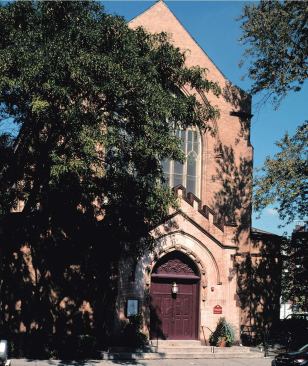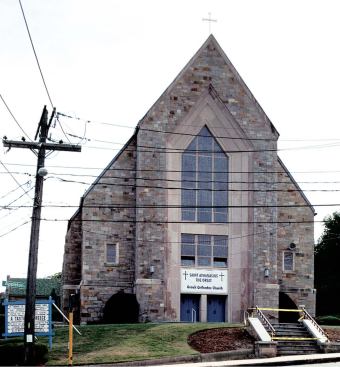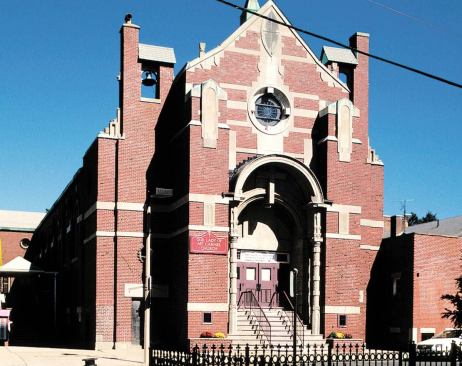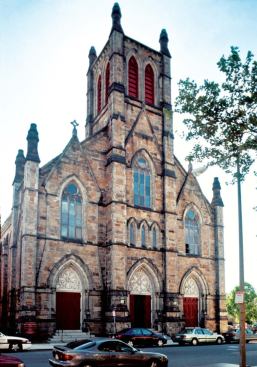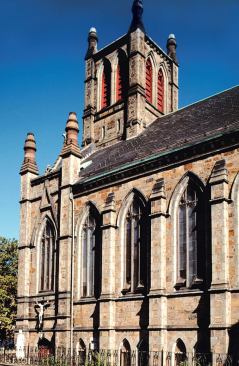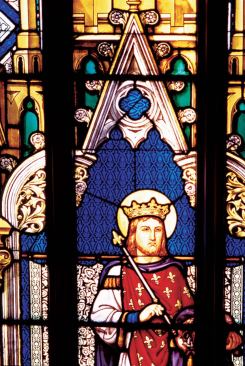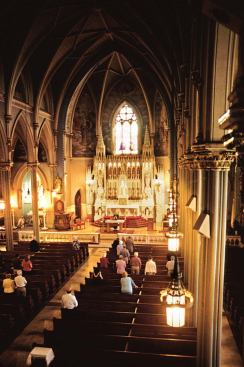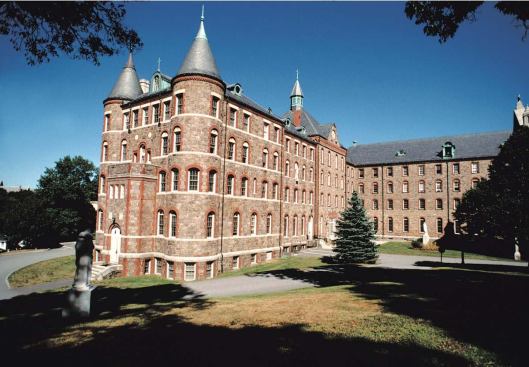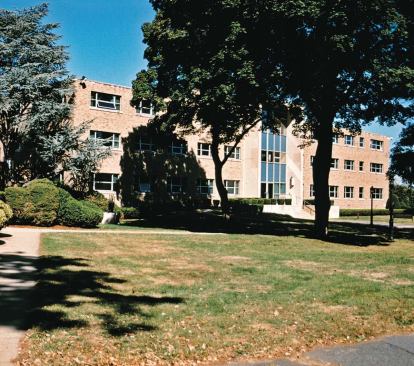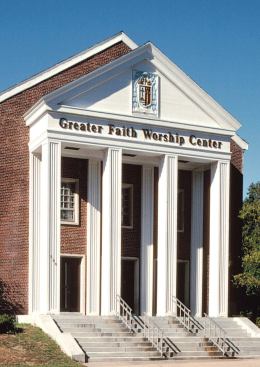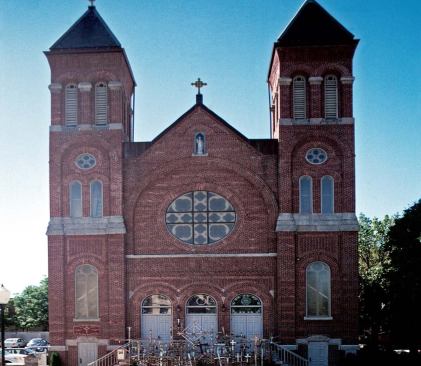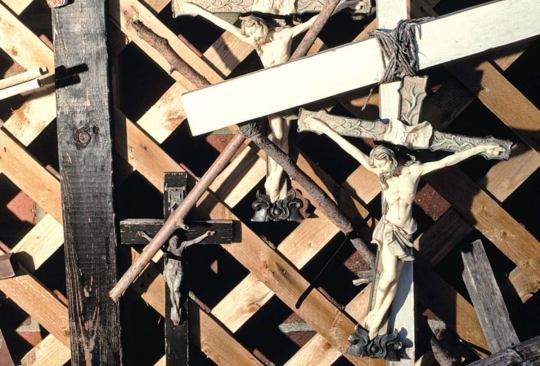Camilo José Vergara
Blessed Sacrament, Jamaica Plain
Closed 8/2004
Bought by Jamaica Plain Neighborhood Development Corp. 12/2005
After closing in August 2004, Blessed Sacrament was sold to the nonprofit Jamaica Plain Neighborhood Development Corp. (JPNDC) and New Atlantic Development for conversion to a. ordable housing in an area where it is increasingly scarce. A first phase of 80 housing units in the former rectory and convent, as well as in a new building, has begun. The second phase, housing in the church, will require considerable subsidies. A former school building (above right) is converting to a community center. “This is really a development that’s going to serve the people here,” says Joseph Vallely, a JPNDC board member and fellow parishioner, “not bring in new people.”
St. Mary Star of the Sea, East Boston
Closed 8/2004
Bought last year by a local photographer, then resold weeks later for $1.8 million profit
The archdiocese closed this 1909 Romanesque church near Boston’s Logan Airport and sold it for $850,000 in November 2006 to a photographer, Michael Indresano, who promised to turn it into condominiums and his own studio. Instead, Indresano resold the building weeks later for $2.65 million to a controversial Brazil-based Pentecostal congregation, the Universal Church of the Kingdom of God, which has been called a dangerous cult and linked to alleged fraud, money laundering, and child abuse in Europe and elsewhere.
Immaculate Conception, North Cambridge
Closed 2/2005
Sold to Serbian Orthodox Church
In November 2005 this church was sold to St. Sava Serbian Orthodox Church. It reopened two months later. Father Aleksandar Vlajkovic is awaiting delivery next June of the ritualistic wood screen, the ikonostasis, that will separate the sanctuary from the central nave; it is being carved by an artist in Novi Sad, Serbia. With the nearest Serbian Orthodox churches in Canada and New York City, ethnic Serbs come from far and wide to worship. On big feast days, Vlajkovic says, up to 700 people attend services. The white tent was erected for Serb Fest 2007. At last year’s festival, says Vlajkovic, “a lot of [Immaculate Conception] parishioners showed up.”
St. Ann, Fenway
Closed 10/2004
Sold to Northeastern University
After St. Ann University Parish closed in October 2004, tensions mounted in the Fenway neighborhood around a bid by Northeastern University to buy the church, whose students it had served for 25 years. The Fenway Community Development Corp. had hoped to buy the property to build 50 condominiums, including 13 a. ordable units, on the site. Northeastern’s bid prevailed. Residents criticized the archdiocese for favoring the university’s higher bid over the needs of the community. Northeastern now uses the church as meeting space.
Blessed Sacrament, Cambridge
Closed 9/2004
Sold to a luxury developer
Developer Paul Ognibene bought this property in the Cambridgeport neighborhood from the archdiocese and is converting it to condominiums. In the. first phase, the 1924 brick school overlooking a small park is becoming 23 units priced between $519,000 and $849,000. Condominiums within the church itself are expected to go on the market in 2008.
St. James the Apostle, Arlington
Sold to Greek Orthodox Church 11/2005
St. James had a huge congregation during the postwar suburban boom, but after the liturgical changes of the Second Vatican Council in the early 1960s, “people began to drift away,” says former parishioner James McGough. The church now belongs to a burgeoning Greek Orthodox congregation.
Our Lady of Mt. Carmel, East Boston
Closed 10/2004
Parishioners’ vigil has lasted three years
In October, a group of parishioners from this largely Italian- American church marked the third anniversary of a protest vigil they and their supporters have held to keep the parish open. For the vigil’s .first two years, protesters slept inside the church. Now they believe the archdiocese is ultimately loath to remove them. The only comment from the archdiocese’s Kathleen Heck is that Our Lady of Mount Carmel “is home to a prayer vigil.”
Holy Trinity, South End
Slated for closure
Boston’s only Latin Mass moved to a suburban church in 4/2007
Built in 1877, Holy Trinity is the seat of the German Catholic community in Boston. After 1990, it was the only church to offer Latin Mass. In 2004, the archdiocese announced plans to close the church on June 30, 2005. Rather than close it, however, that year the archdiocese announced plans to move Latin Mass to another church, infuriating worshipers who came from miles around for its ancient prayers and Gregorian chant. In July, Pope Benedict XVI relaxed the rules for Latin Masses, inspiring parishioners to hold one of their own at Holy Trinity in September in defiance of the archdiocese. Genevieve Schmidt, the church’s musician, contends the denial of Latin Mass to Holy Trinity is “against canonical law—which is just a small matter.” If the church were to close, the social services programs it hosts for elderly homeless people and troubled teenagers would have to move elsewhere.
Archdiocese of Boston campus, Brighton
Sold to Boston College 8/2007
Symbolic of its humbling in the wake of the abuse scandal, the Boston Archdiocese began selling to the Jesuit-run Boston College the idyllic property and buildings it had called home since the 1920s—a place that has been called a “Little Rome on the hills of Brighton.” In 2004, the college paid $99 million for 44 acres plus the 1927 cardinal’s residence, the 1936 St. Williams Hall (a dormitory), the 1940 St. Clement’s Hall (a preparatory seminary), and a small gymnasium. Last year, it paid $8 million more for five acres and the 1920s tribunal building. In June, the remaining 18 acres went to the college for $65 million, along with the chancery housing the archdiocesan headquarters and three other buildings (one pictured above right). Though Archbishop Sean P. O’Malley expressed regret at having to sell the campus, he noted, “It is good that we have been able to keep the property within the Catholic family.” The church retains ownership of St. John’s Seminary (above left), an 1880s ledge-stone fortress.
St. Peter Lithuanian, South Boston
Slated for possible closure
Panic set in after the 2004 announcement that St. Peter Lithuanian Parish, with 1,300 parishioners, would close (in all, three of four Boston-area Lithuanian parishes were listed for closing). Considered the stronghold of the city’s Lithuanians, who began arriving in the late 1880s, St. Peter played a vital role during the 50-year Soviet occupation of their country, when religious activity was suppressed. (The placing of crosses in front of the church, above right, evokes the devotional “Hill of Crosses” in Lithuania where worshipers express their nationalistic Catholic faith and defiance against foreign invaders.) The planned closing made the front page of Lithuania’s largest daily newspaper and highlighted the sensitivity for the archdiocese in shuttering 13 of its 41 ethnic parishes. Archbishop O’Malley gave priority for remaining open to parishes serving more-recent immigrant populations. Nonetheless, in June 2005, O’Malley granted St. Peter Lithuanian a reprieve. “They’ll review our status in two years and make a decision then,” says a parish spokeswoman, Mirga Girnius.
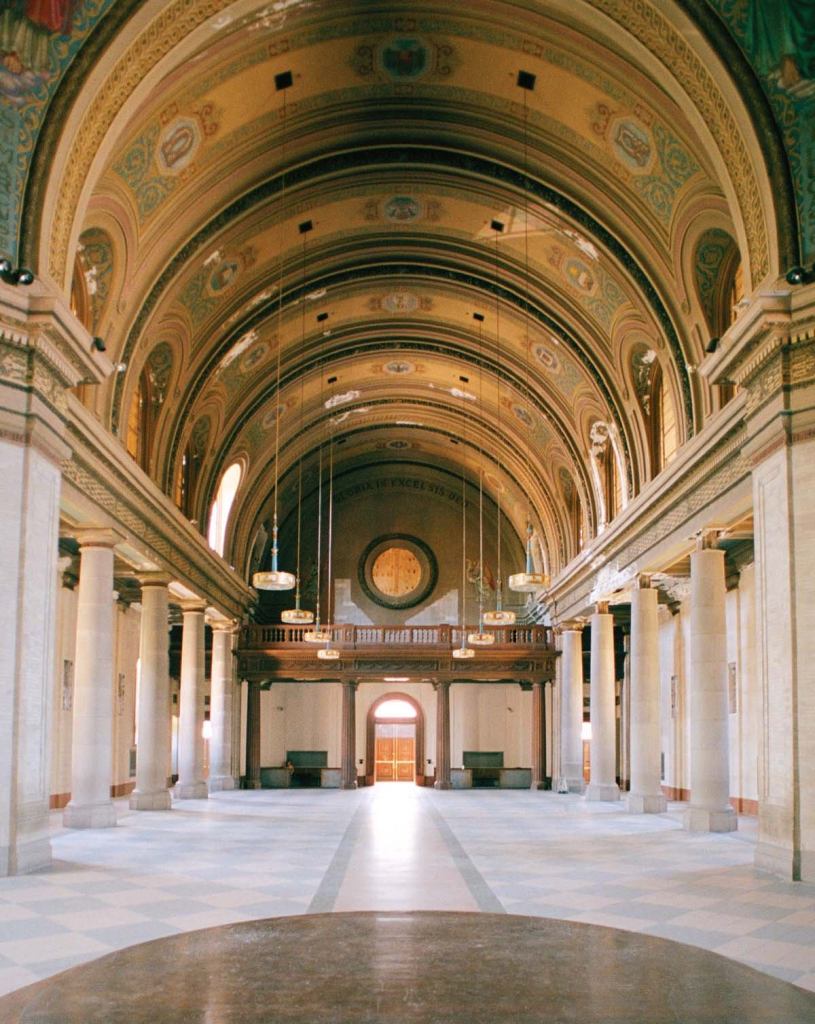
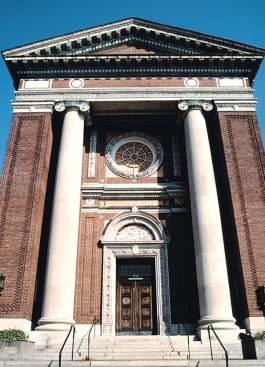
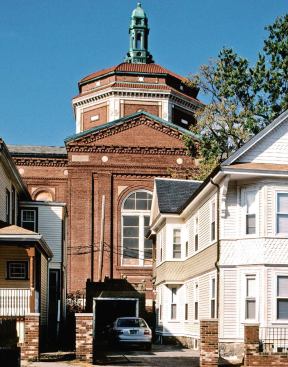
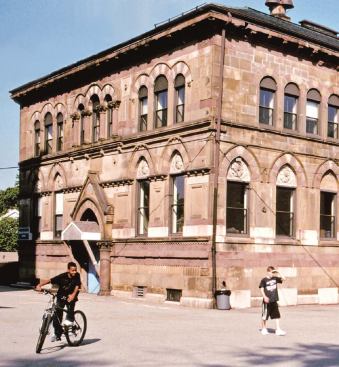
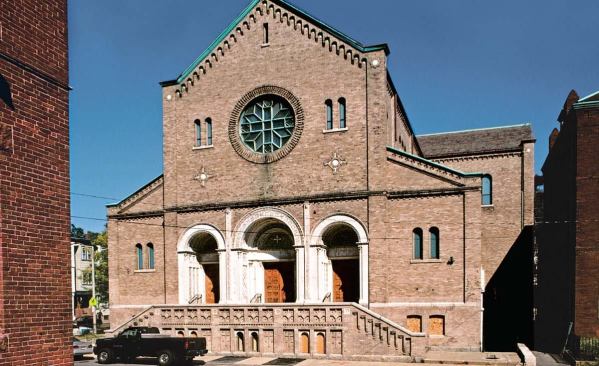
![Immaculate Conception, North Cambridge
Closed 2/2005
Sold to Serbian Orthodox Church
In November 2005 this church was sold to St. Sava Serbian Orthodox Church. It reopened two months later. Father Aleksandar Vlajkovic is awaiting delivery next June of the ritualistic wood screen, the ikonostasis, that will separate the sanctuary from the central nave; it is being carved by an artist in Novi Sad, Serbia. With the nearest Serbian Orthodox churches in Canada and New York City, ethnic Serbs come from far and wide to worship. On big feast days, Vlajkovic says, up to 700 people attend services. The white tent was erected for Serb Fest 2007. At last year's festival, says Vlajkovic, "a lot of [Immaculate Conception] parishioners showed up."](https://architectmagazine.stg.zonda.onl/wp-content/uploads/sites/5/2025/06/tmpcec7-2etmp-tcm20-173335.jpg?w=653)
